QC OnE
Re-imagining the inspection process of fresh produce
QC one is a quality control company that provides a platform for their clients to inspect fresh produce and report findings throughout the supply chain. Currently, providing support for their clients takes a lot of time and inhibits business growth.
GOAL
Create a pro-active self-service platform that allows clients to easily manage their own setup and business processes.
OUTCOME
A digital concept that maps the user’s process, simplifying the service and allowing users to easily and efficiently set-up and manage their processes.
my role
Lead UX, UX/UI design, User research, Concept design, Product Owner
COMPANY
Sping
The project
The service of QC One aids inspectors of various organisations in inspecting fresh produce based on pre-defined specifications (parameters). These are set by the quality manager of an organisation, based on requirements of all parties involved. The produce is inspected during multiple moments in the product life cycle (for example, upon arrival in the warehouse). A report is generated to show if and how the product lives up to the regulations. This service allows organisations to validate the quality of their purchased produce.
I was the lead UX/UI designer in this project, and was responsible for unravelling the complexity of the QC One service, specifying building blocks and shaping a UX strategy that addresses the underlying issues.
Data model
At the start of the project, I had to dive into the structure behind the platform and service of QC One, in order to understand how all system entities are related. The system can roughly be divided into three main parts: products & specifications, measurements and inspections. However, these entities are intertwined throughout the whole system and user interface. I therefore clustered the three building blocks and devised a plan to unravel them logically.
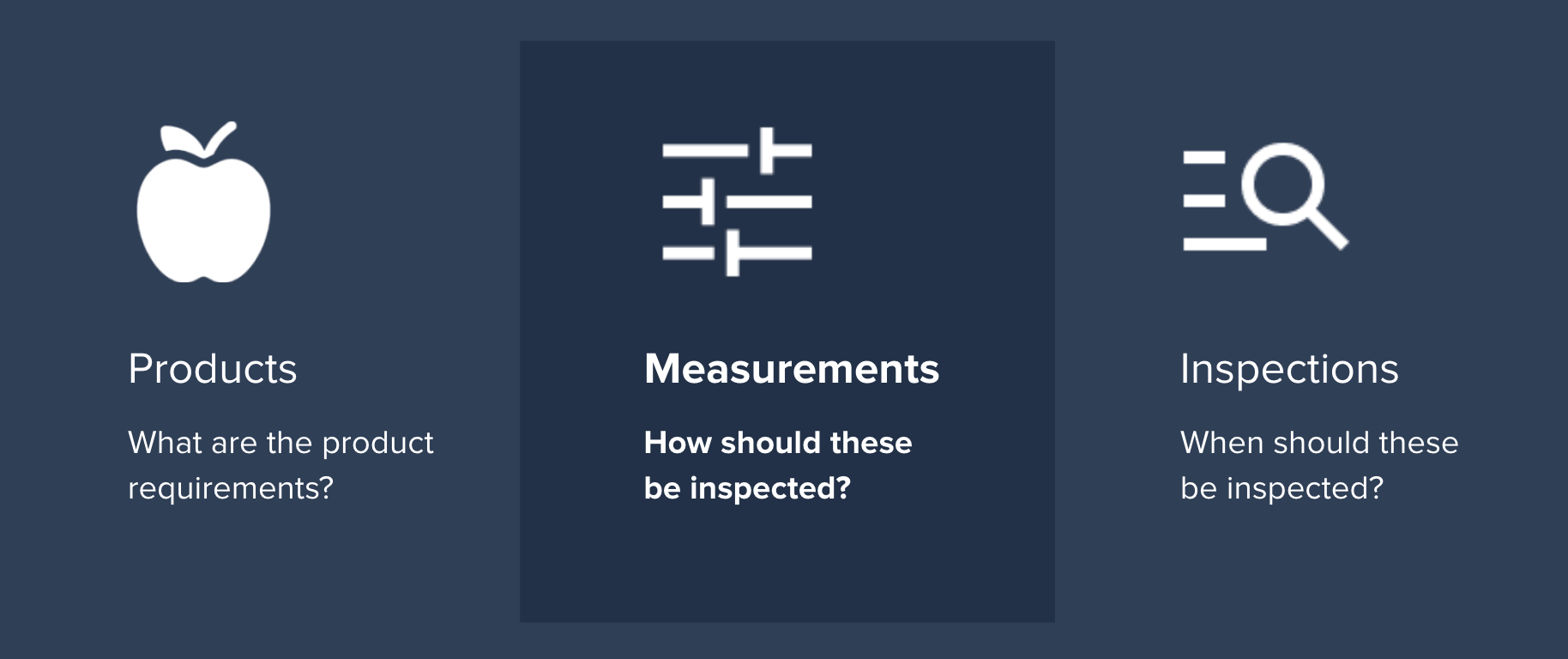
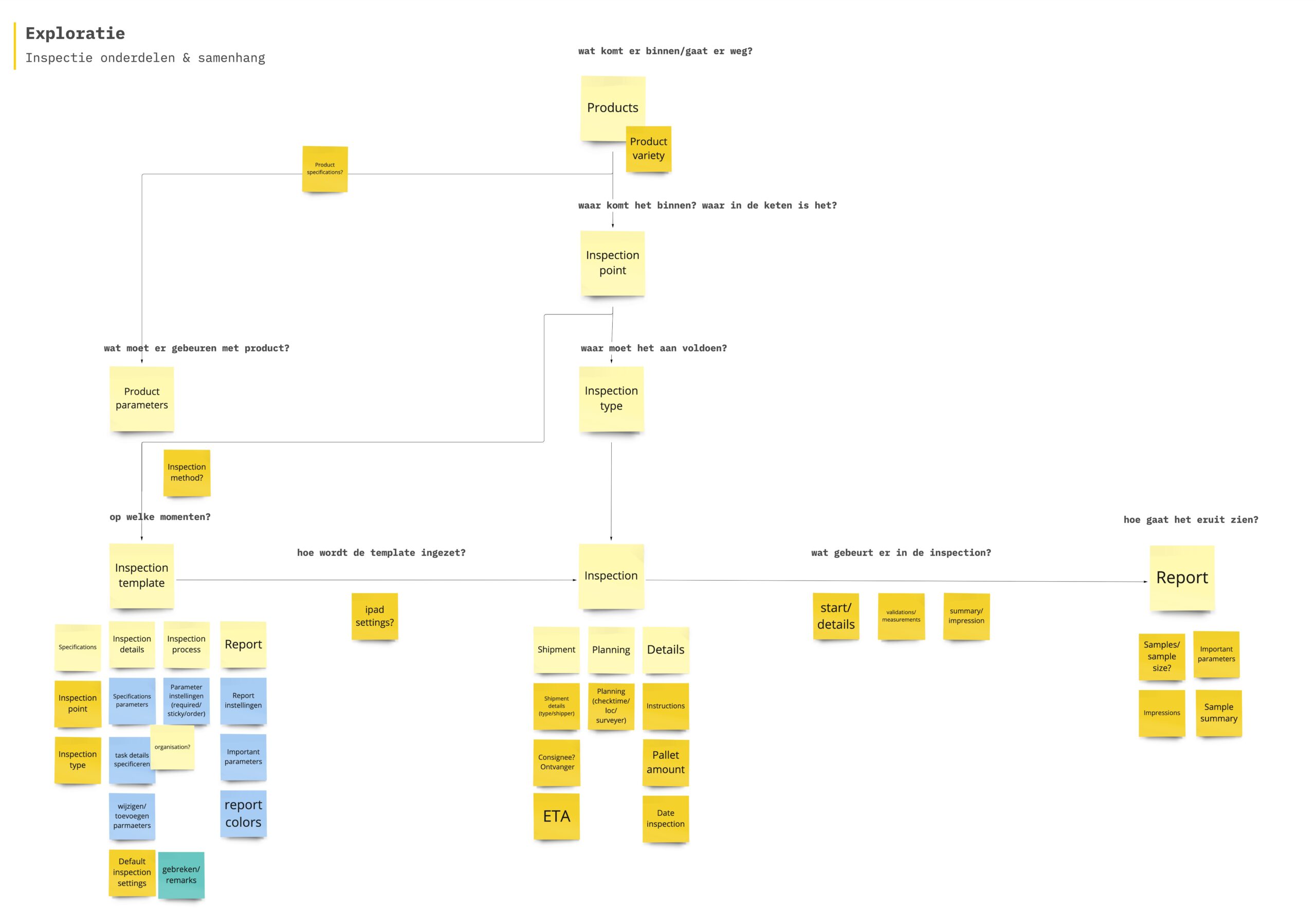
For the first part of the project I focused on the building block ‘measurements’, mainly on what are called parameters. These determine how a product should be inspected at any given point. Users can add parameters to products, but only the QC One administrator can create new parameters in the system. This requires a complex and multi-layered process that is time-consuming and not intuitive. Moreover, due to this complexity, a multitude of individual measurements is created in the system. In order for organisations to create parameters themselves, the process would have to be greatly simplified.
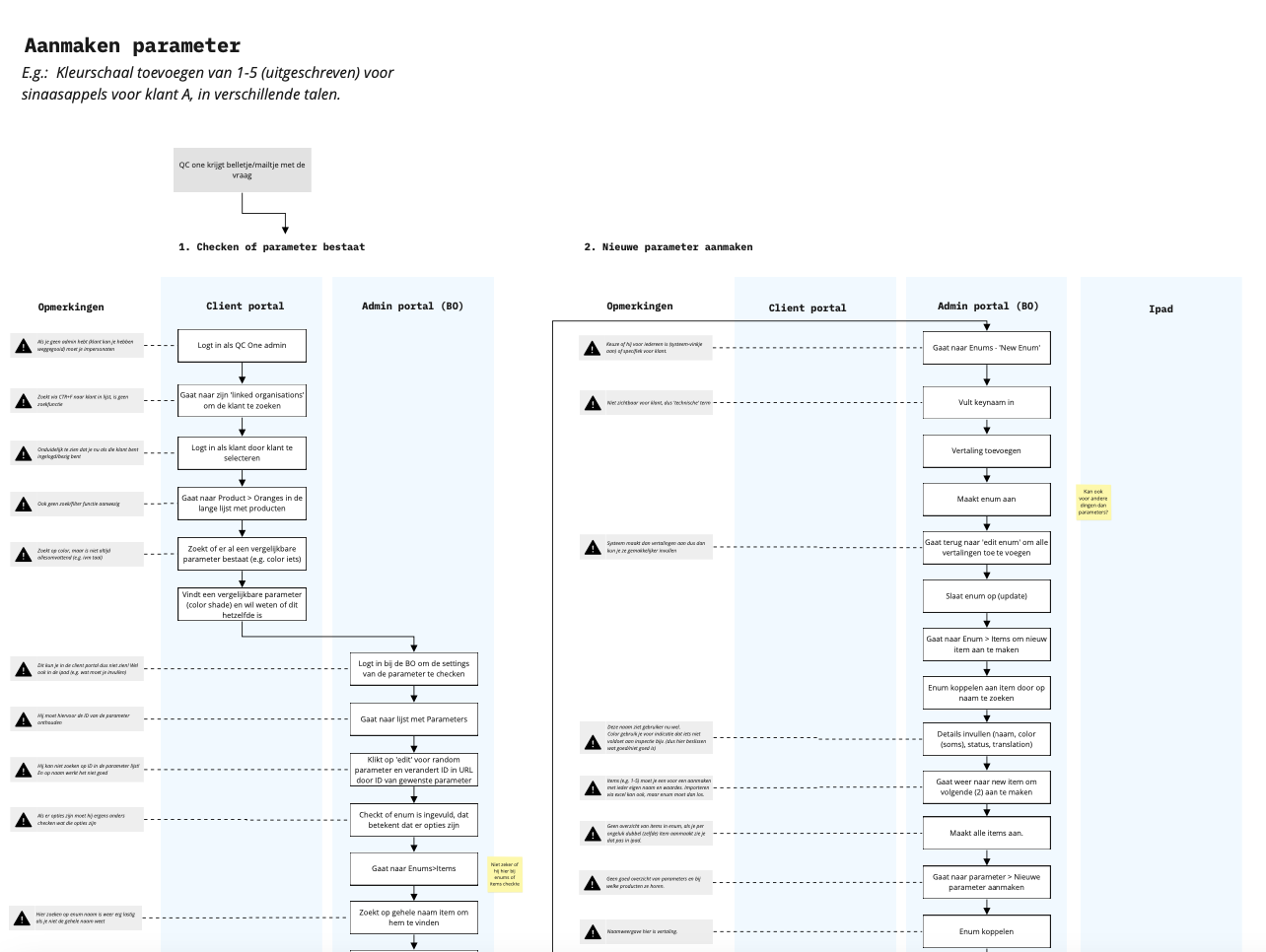
Design exploration
I had multiple sessions with QC One, in which we explored their system processes and business (strategy). This allowed me to better understand the core structures and issues behind the inspection processes. I identified three areas of improvement that will contribute to a self-service environment, and translated these into key focus areas for the project.

Next I dove into the parameter management within the system. I analyzed the parameters being used and clustered them based on common characteristics, such as type of output. I also took into account how parameters were being used and at what level (e.g. specific for an organisation or not).
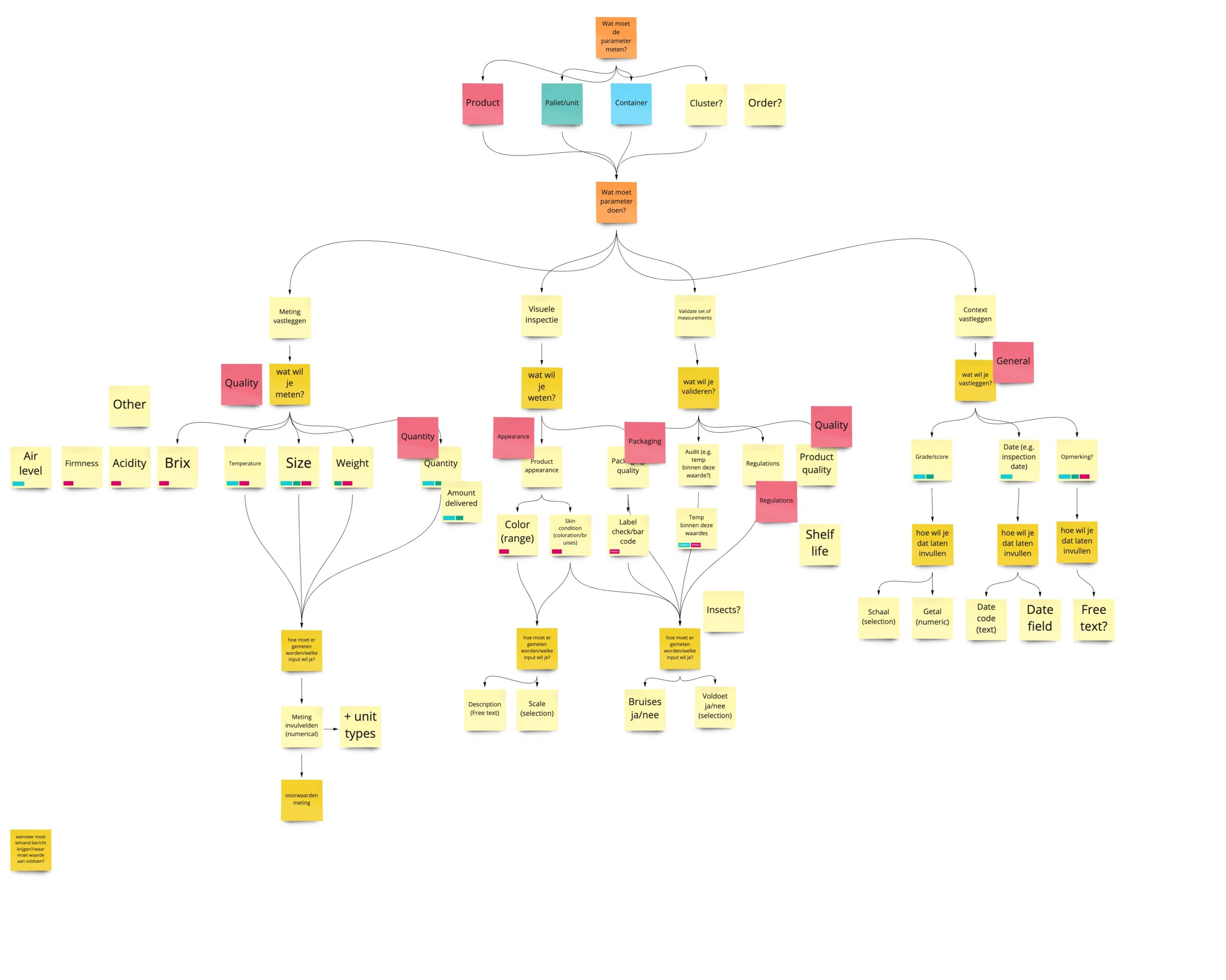
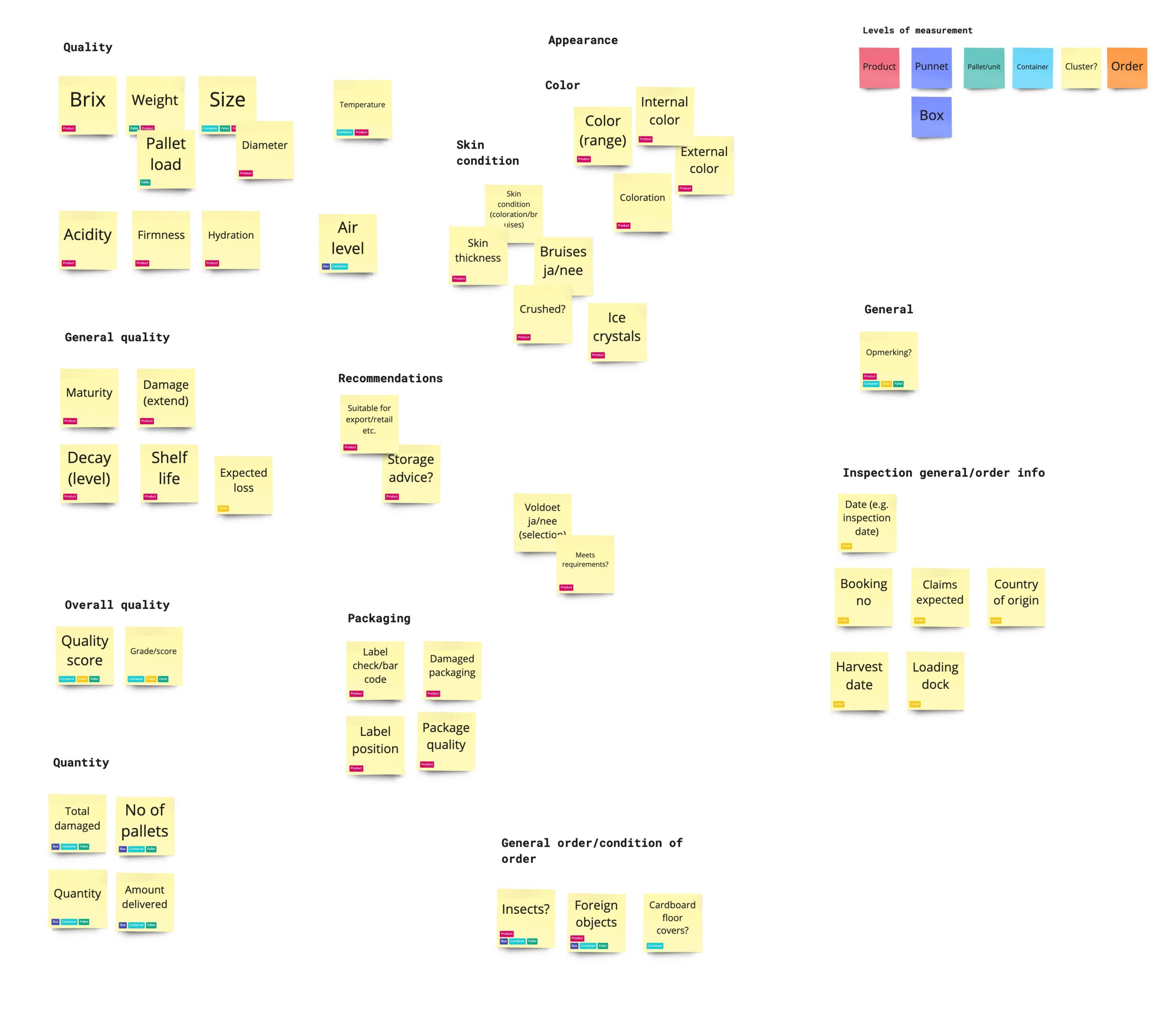
Based on this system, I clustered all parameters by type and divided them into general (true for all products) and specific characteristics (applied to one product). This created a standardized list of parameters that can be implemented across products. The approach minimized the multitude of possible variations, making it easier for users to find the required parameter and prevent future sprawl.

Design process
With this system set, I started laying out the necessary user goals to create such parameters. I used the existing system as a starting point, but made changes to the existing interface where needed. In this way I was able to create a better overview for users, that would allow them to more easily build up their own system.
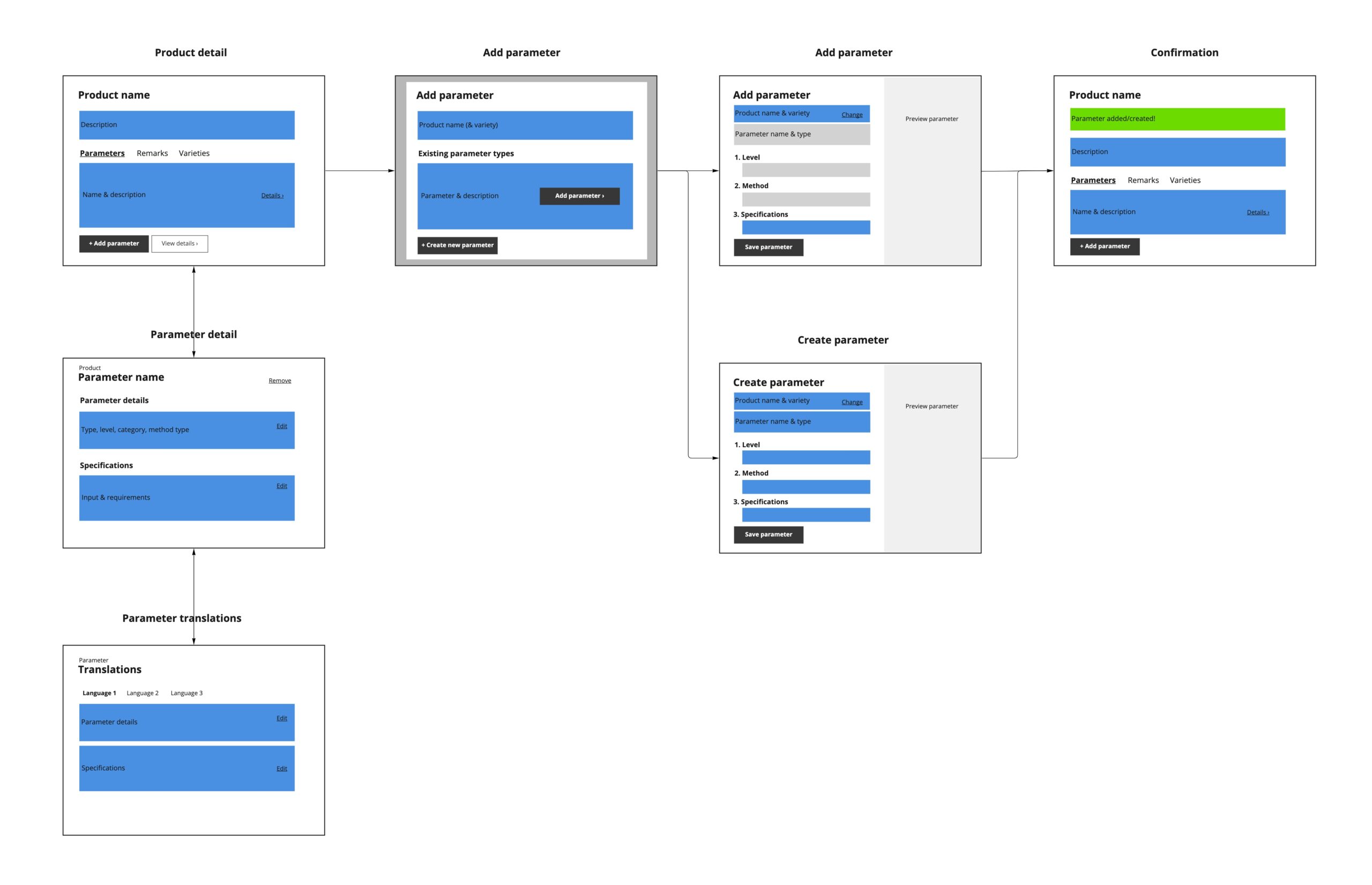
Because of the new parameter categorization, I was able to drastically decrease the steps required to create new parameters. I divided the process into clear steps, creating a task-oriented flow that guided users forward, explaining the different decisions to make.
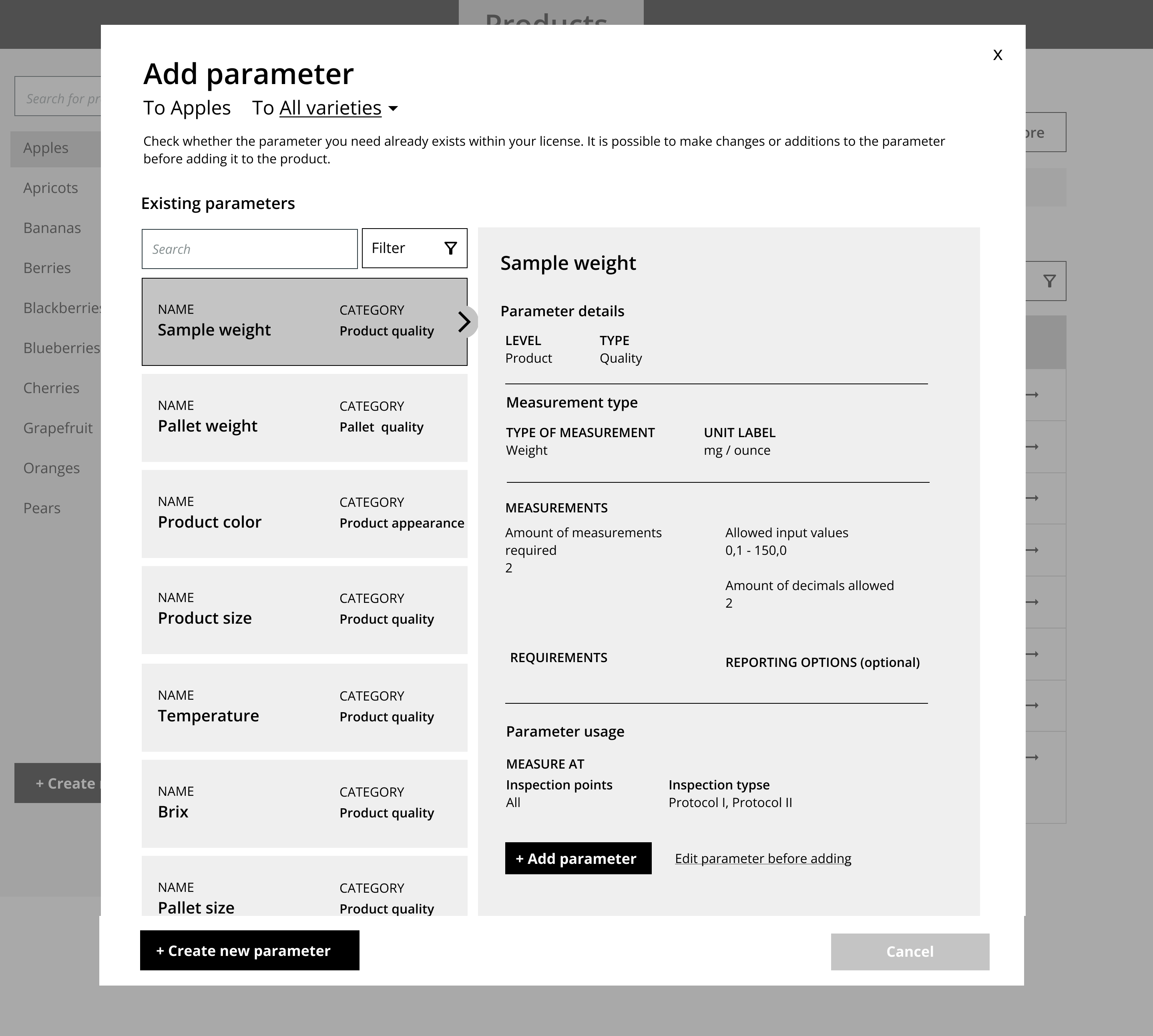
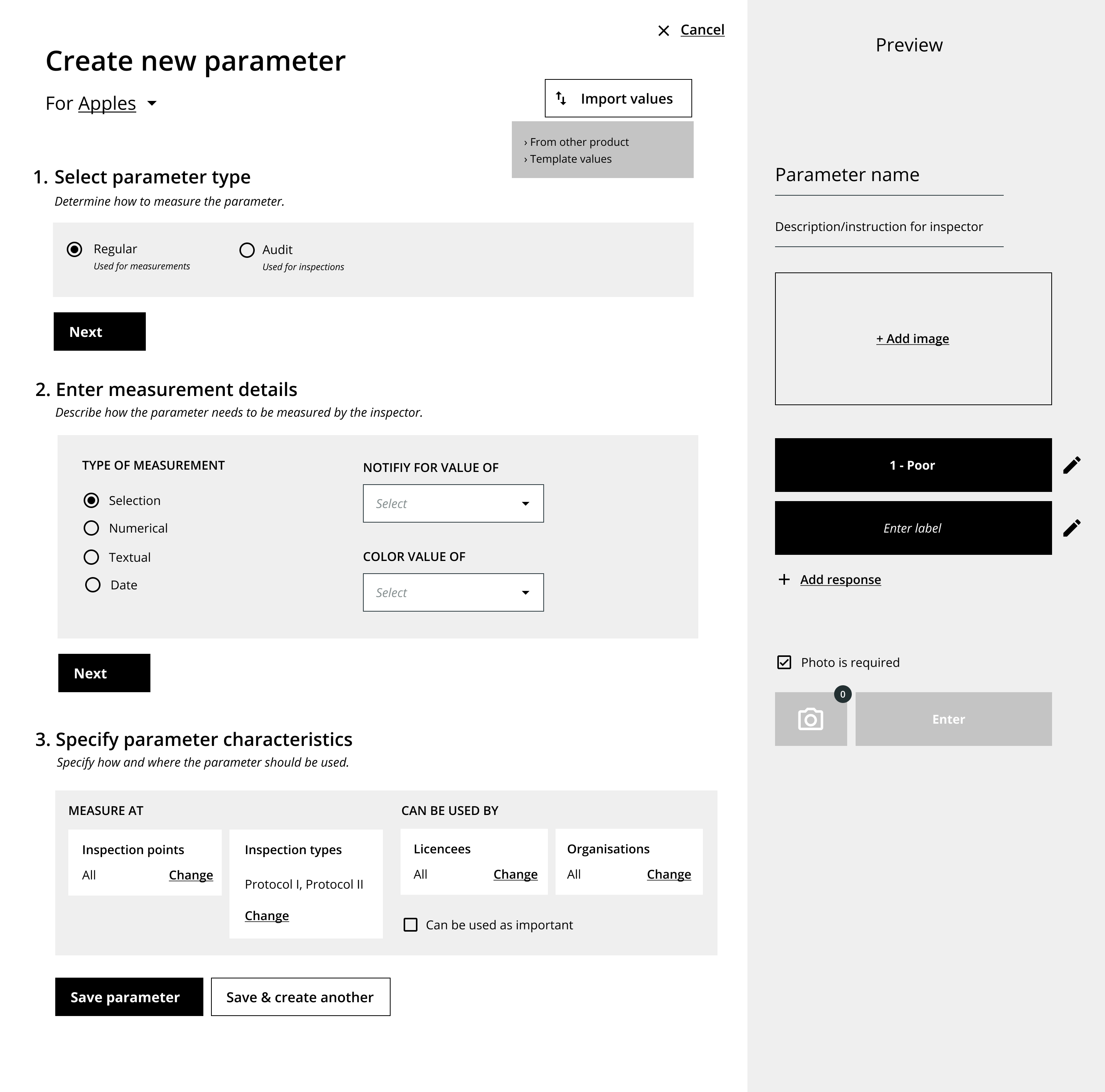
Next, a fellow UX-designer and me validated this new setup with users of the QC One service. This helped to verify our understanding, grasp their current work processes and map their mental models onto the system. I found that the main goal for these users was not to ‘create their own parameters’, but to ‘inspect fresh produce based on pre-defined measurements to keep them up to quality standards’. Based on this insight, I redesigned the approach to better fit into the goal-oriented mindset of users.
The result
The final concept imagines a new and simplified user flow for creating parameters, allowing for more freedom for users to build their own system while keeping an overview of all important aspects. It focusses on the user’s goal, highlighting how the parameter will be used to aid the inspection process. It also provides the users with a better overview and more insights into how parameters work.


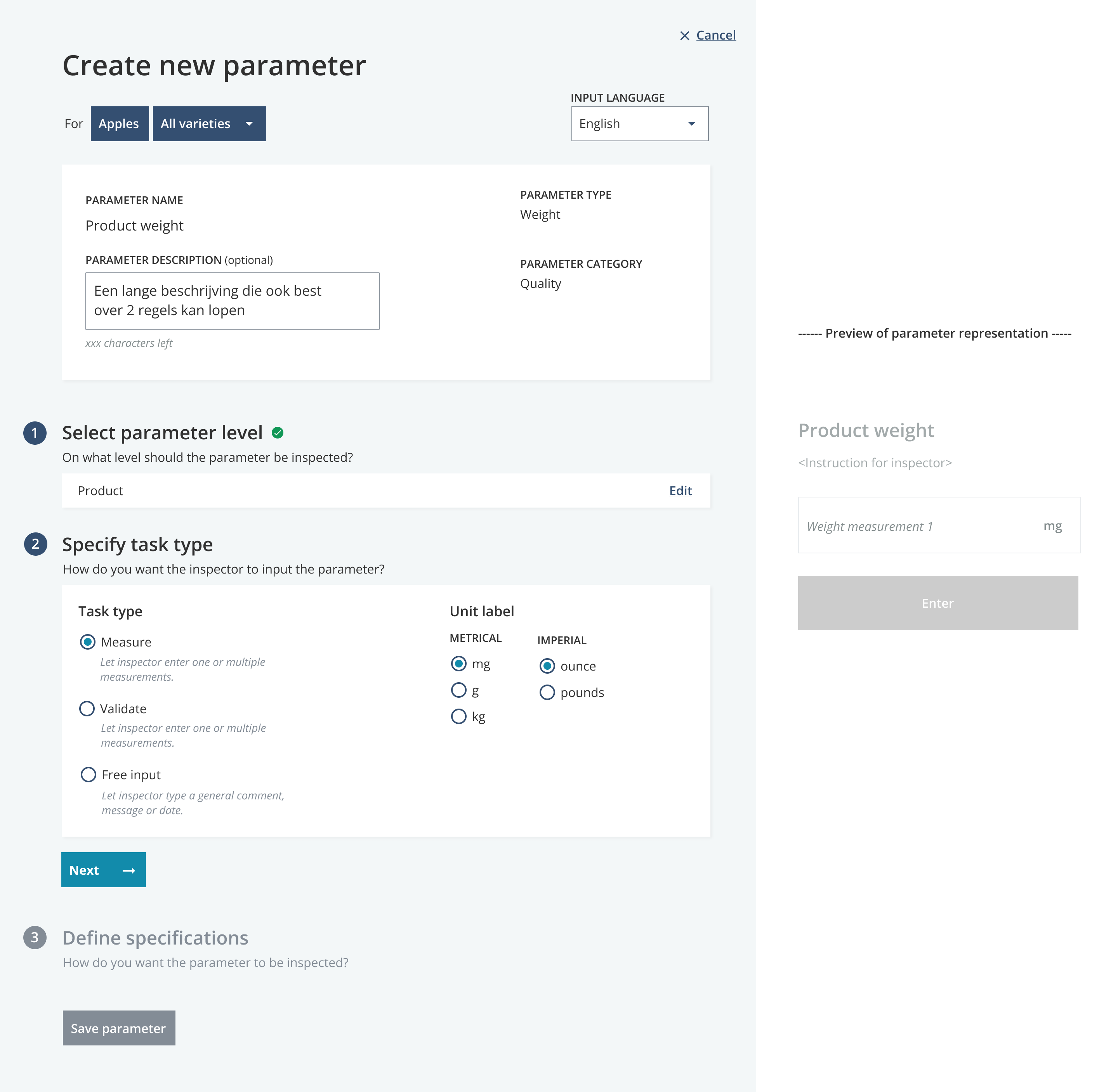
After the design process, I was also involved in realizing the concept. I aided the development team and client by functioning as a product owner during part of the project (until this role shifted to the client-side). I helped the client translate their business objectives into epics for the roadmap. Next, I translated all design effort into a user story map, that functioned as a detailed release plan. Currently this project is still in progress.
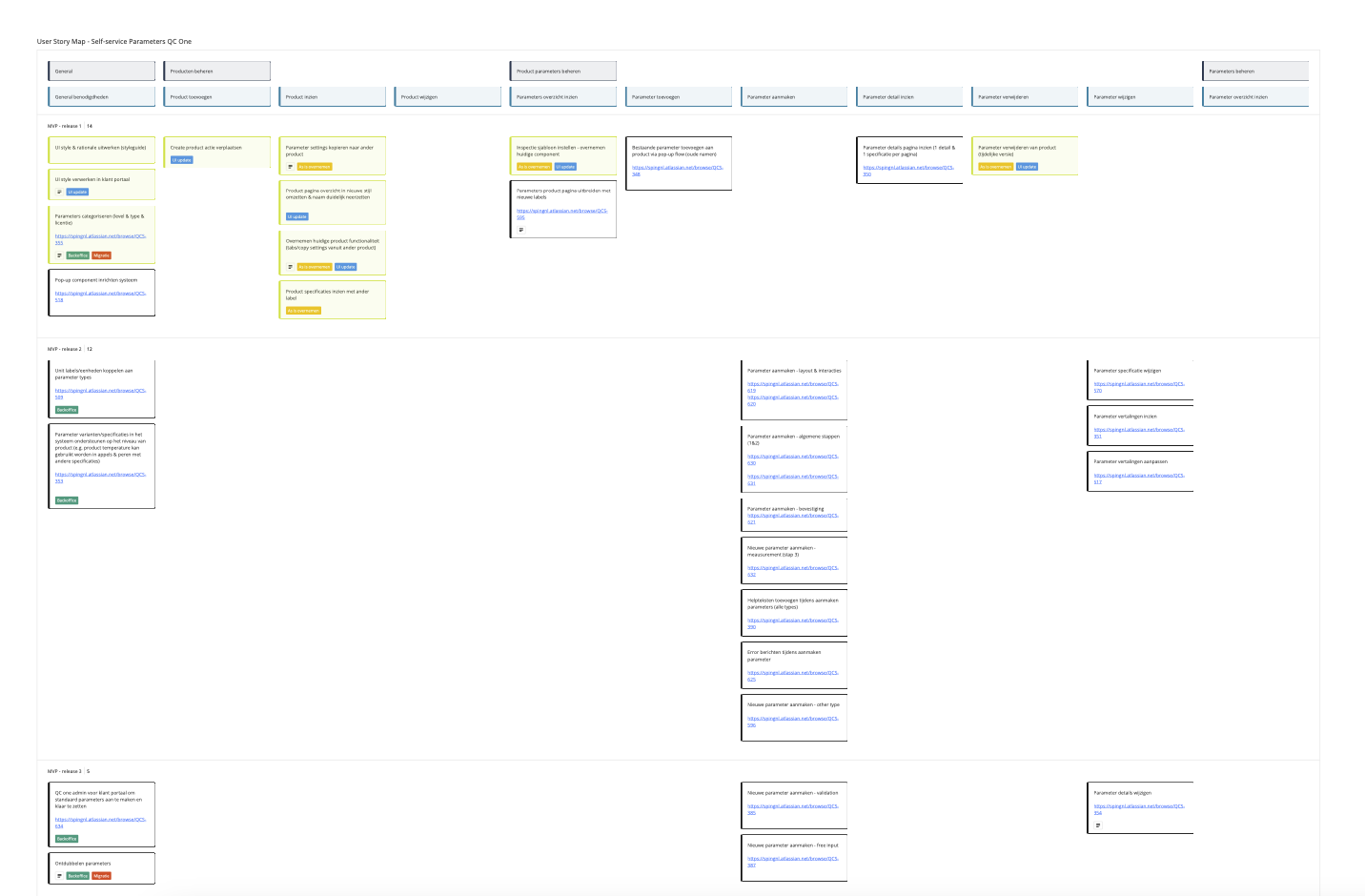
The future
After the first phase, I also dove into the other building blocks – products & specifications and inspections. Based on new insights and a style created by a third party, I imagined what the future of the platform and service of QC One could look like. I expanded on our earlier concept and redefined the overarching user flows to create a more intuitive and straight-forward interface. This included a redesign of the app used by inspectors to record the outcome of inspections.
The goal was to provide QC One with a glimpse of the future, helping them to pitch this new idea and vision to their stakeholders.
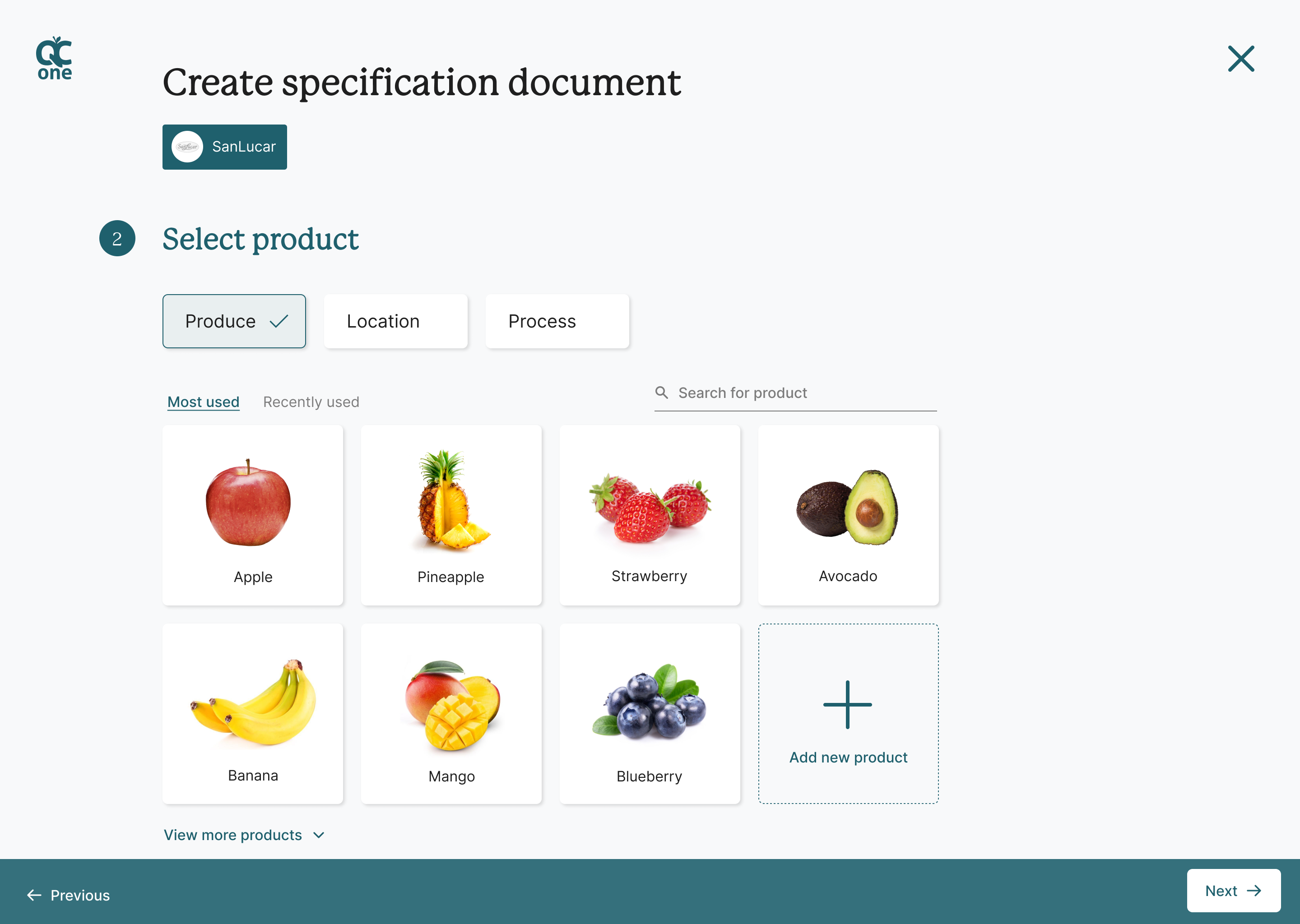
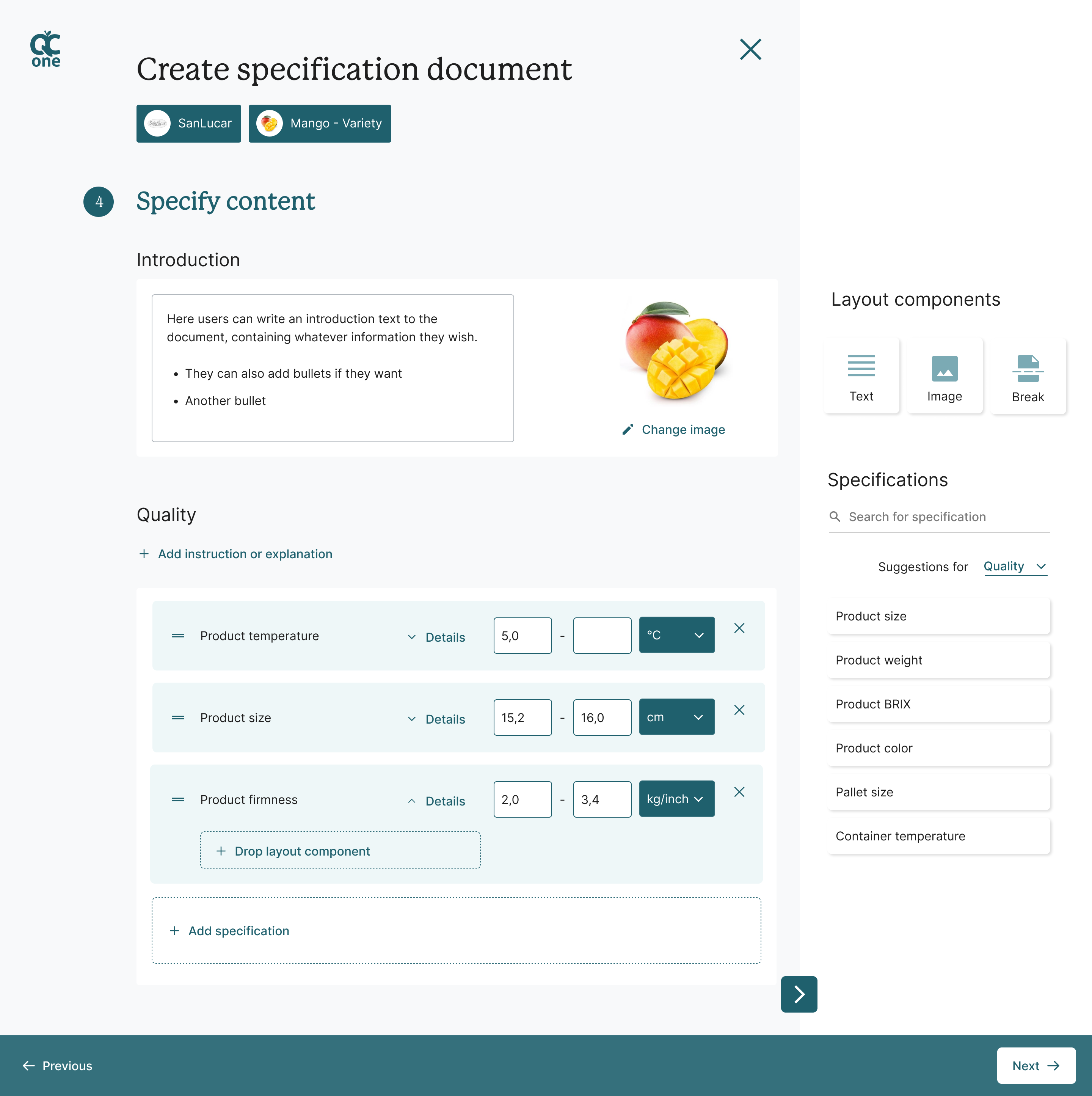
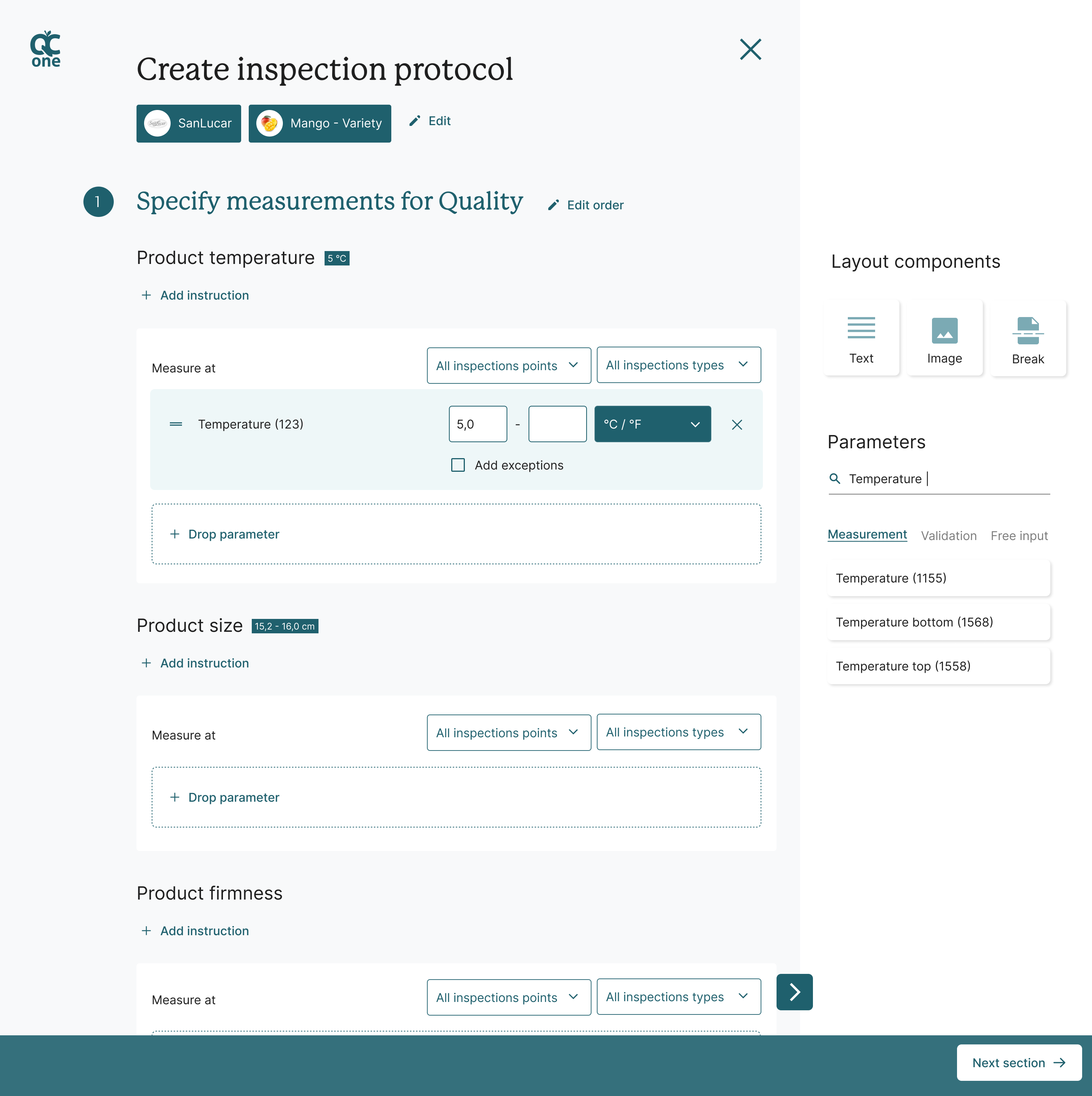


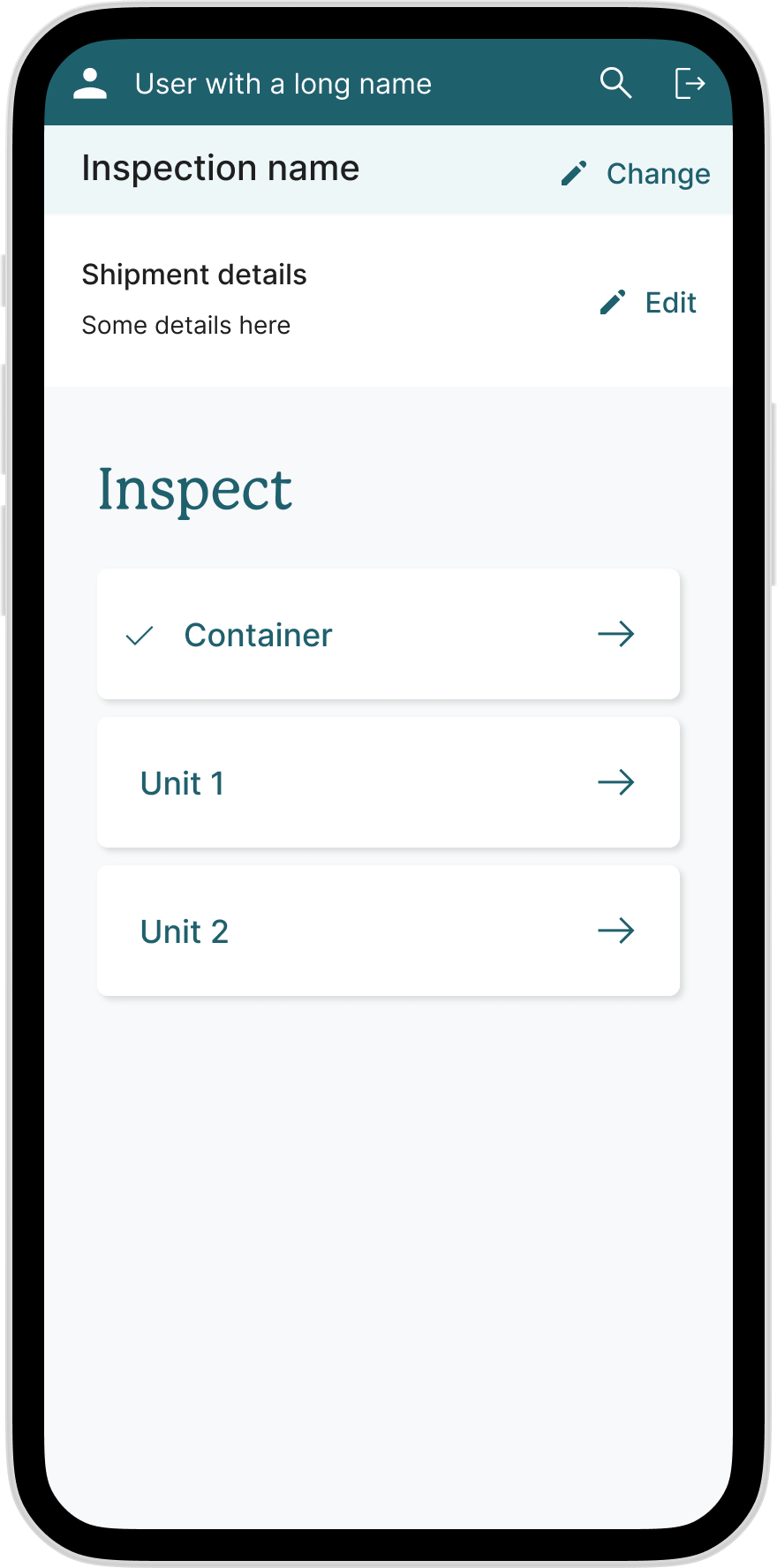
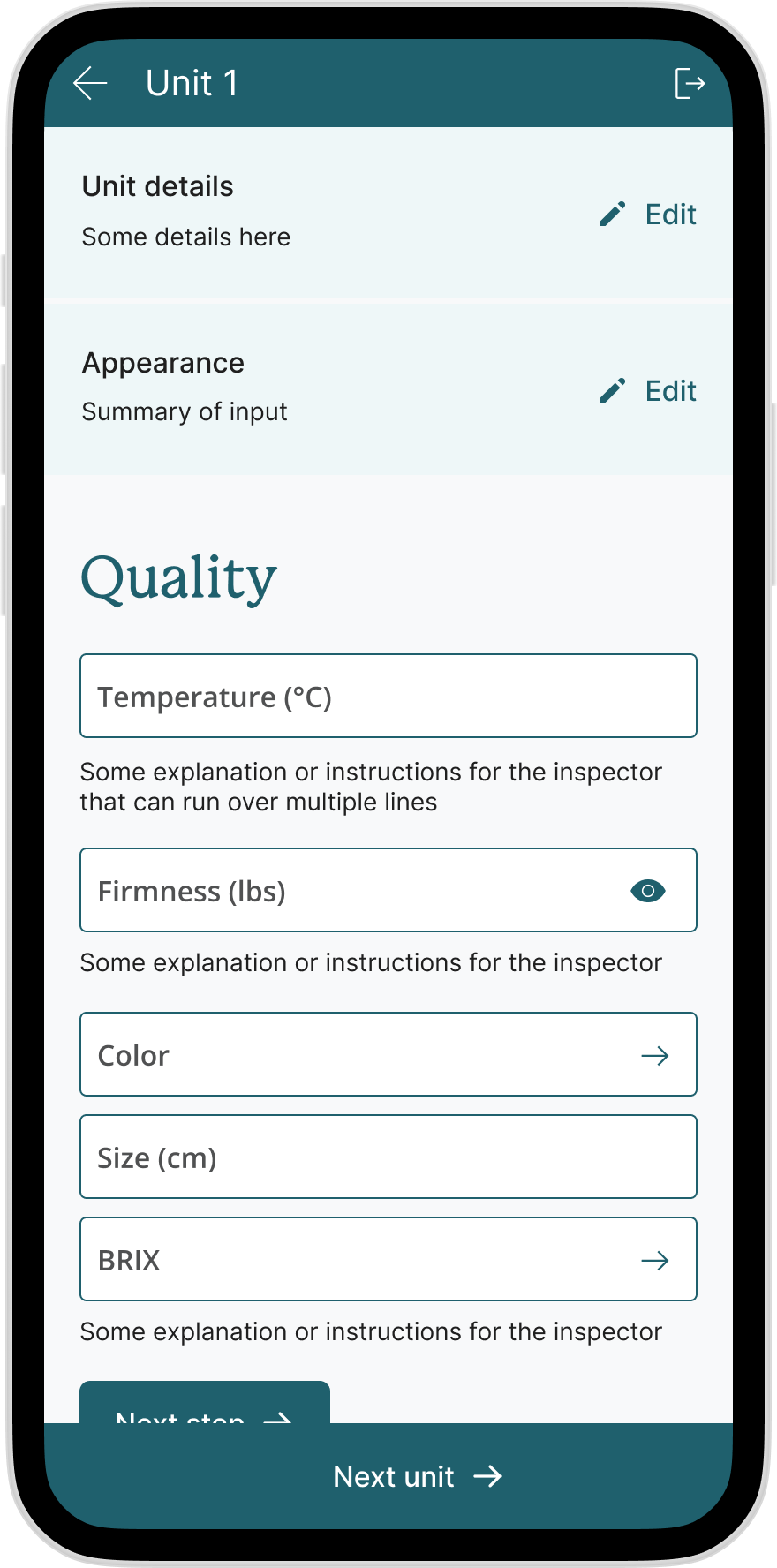
My activities
- Helping define business & product strategy
- Analyzing & reframing the data model
- Defining concept story, directions & principles
- Redesigning the service & processes
- Designing user experience and interactions
- Conducting user research
- Leading workshops and presentations for the client